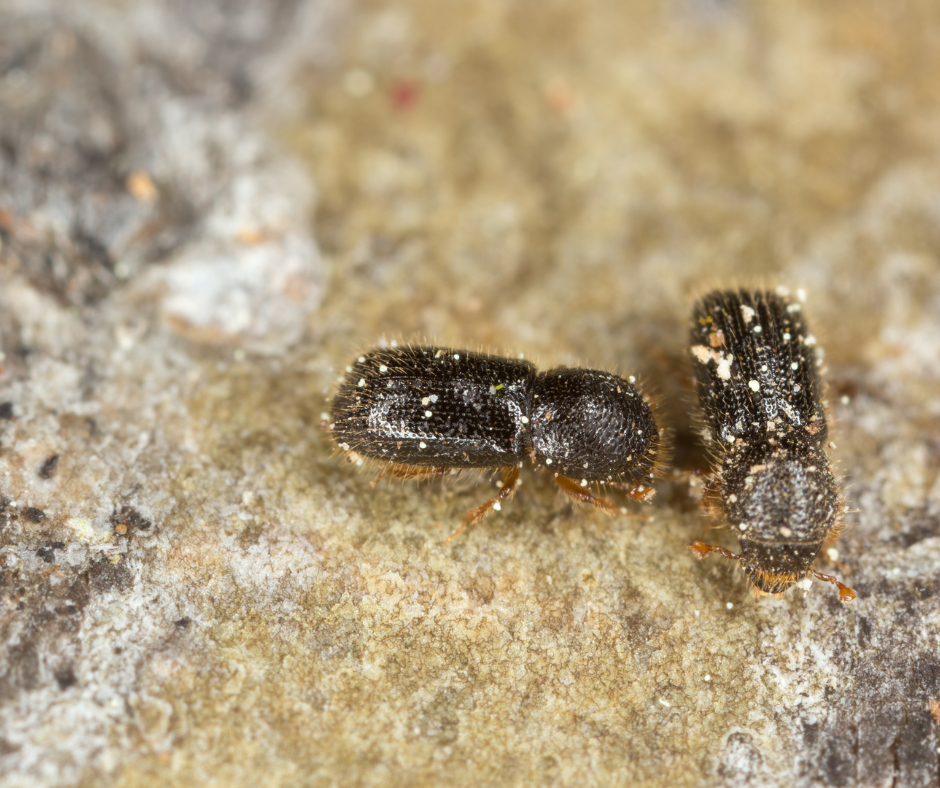Ambrosia Beetles
go.ncsu.edu/readext?944756
en Español / em Português
El inglés es el idioma de control de esta página. En la medida en que haya algún conflicto entre la traducción al inglés y la traducción, el inglés prevalece.
Al hacer clic en el enlace de traducción se activa un servicio de traducción gratuito para convertir la página al español. Al igual que con cualquier traducción por Internet, la conversión no es sensible al contexto y puede que no traduzca el texto en su significado original. NC State Extension no garantiza la exactitud del texto traducido. Por favor, tenga en cuenta que algunas aplicaciones y/o servicios pueden no funcionar como se espera cuando se traducen.
Português
Inglês é o idioma de controle desta página. Na medida que haja algum conflito entre o texto original em Inglês e a tradução, o Inglês prevalece.
Ao clicar no link de tradução, um serviço gratuito de tradução será ativado para converter a página para o Português. Como em qualquer tradução pela internet, a conversão não é sensivel ao contexto e pode não ocorrer a tradução para o significado orginal. O serviço de Extensão da Carolina do Norte (NC State Extension) não garante a exatidão do texto traduzido. Por favor, observe que algumas funções ou serviços podem não funcionar como esperado após a tradução.
English
English is the controlling language of this page. To the extent there is any conflict between the English text and the translation, English controls.
Clicking on the translation link activates a free translation service to convert the page to Spanish. As with any Internet translation, the conversion is not context-sensitive and may not translate the text to its original meaning. NC State Extension does not guarantee the accuracy of the translated text. Please note that some applications and/or services may not function as expected when translated.
Collapse ▲ Ambrosia beetles are a serious threat to mature trees in the landscape. When ambrosia beetles bore into trees, the tree is infected with a fungus that grows within the tunnels created by the beetles, and serves as a food source for both the adult beetles and their larvae. The fungus disrupts the flow of nutrients and water, severing the connection between the roots and the leaves. This causes wilting and dieback of branches, and in severe cases, can lead to the death of the entire tree, especially if the tree is already stressed.
Ambrosia beetles are a serious threat to mature trees in the landscape. When ambrosia beetles bore into trees, the tree is infected with a fungus that grows within the tunnels created by the beetles, and serves as a food source for both the adult beetles and their larvae. The fungus disrupts the flow of nutrients and water, severing the connection between the roots and the leaves. This causes wilting and dieback of branches, and in severe cases, can lead to the death of the entire tree, especially if the tree is already stressed.
And ambrosia beetles are attracted to weakened or stressed trees, making them particularly dangerous in landscapes that are not well-maintained or that have suffered from drought, disease, or other environmental stressors. Last summer I saw a few very large white oaks start wilting and then quickly die, all in a month from beginning to end. This was very surprising to me because white oaks are our longest lived oak species, known for being tough and well-adapted to this region.
One of the most significant challenges of managing ambrosia beetle infestations is that the beetles are difficult to detect. The tunnels they create are small and can be difficult to see, and the beetles themselves are only about 1/8 inch in size. It is much more common to find the sawdust created by these beetles in small piles around the base of the tree. The sawdust is extremely fine textured; more fine in texture than most sand. It’s so fine that it’s almost a powder. Sometimes, the sawdust extrudes out of the hole in a stiff column like a pencil lead – this is a dead giveaway for ambrosia beetles. But by the time visible signs of damage appear, the infestation may be well-established and difficult to control. So, as they say, an ounce of prevention is worth a pound of cure.
To prevent ambrosia beetle infestations, it is essential to keep large old trees healthy and well-maintained. The best prevention is keeping the tree from becoming stressed. This means increasing the size of the mulch ring and removing grass to reduce competition. If we get a long period of drought this summer, consider watering your large old trees to keep their health up. Add a few bags of organic compost and water it into the mulch.
If you suspect that your trees may be infested with ambrosia beetles, it’s best to consult with a certified arborist to properly diagnose the problem and quickly develop an appropriate treatment plan. I’ve seen large old trees die very quickly, so early detection and quick intervention can help prevent the spread of these damaging pests and protect the health and beauty of your trees.
Removing large old trees can be very expensive. I promise you, it is much cheaper to keep your trees healthy through mulch and compost, and some supplemental watering at a few key points during the hottest, driest part of summer. $50 of mulch and compost and an extra $20 on your water bill could prevent you from spending thousands of dollars to remove a large old tree.




